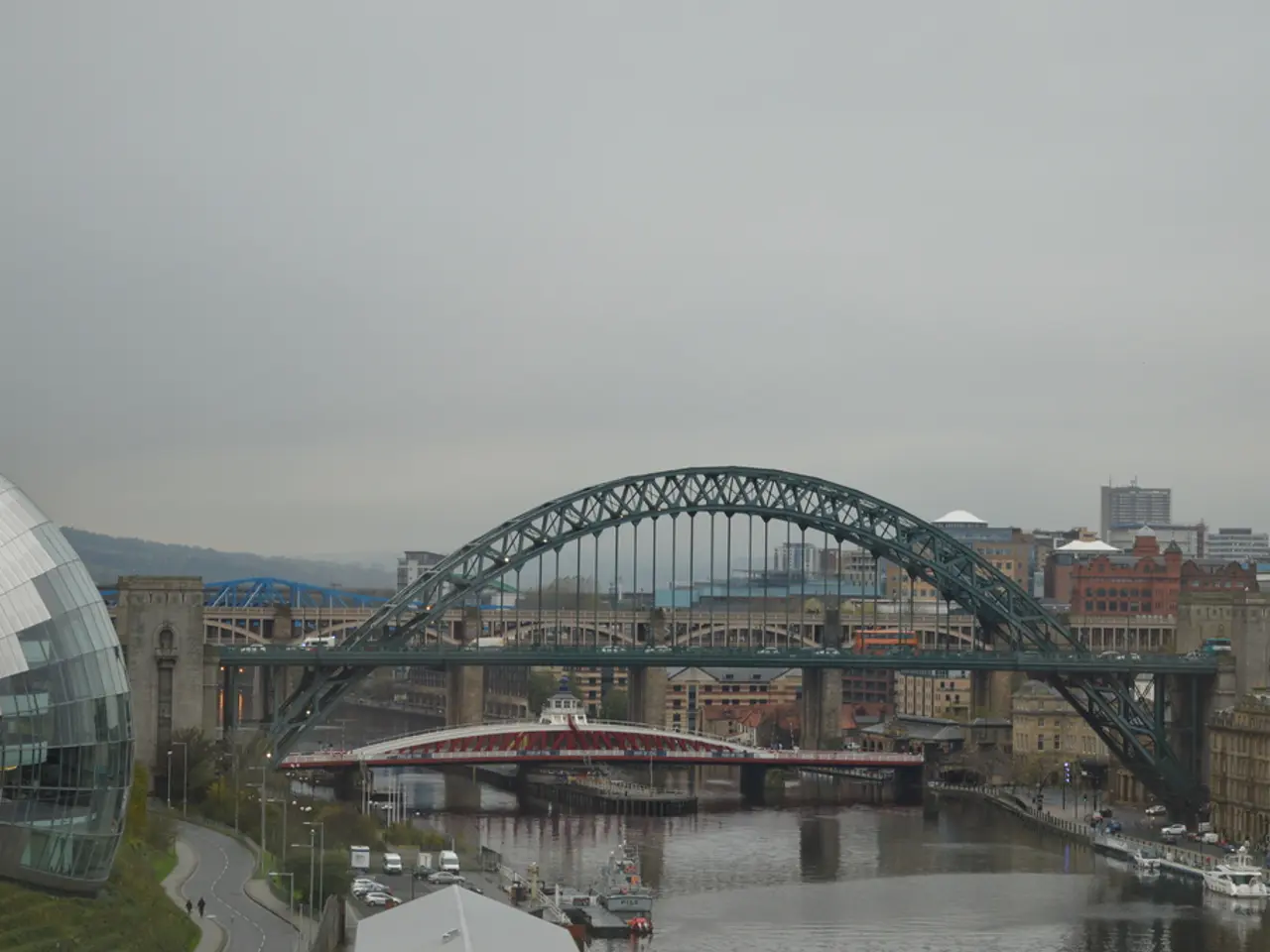AI's Role in Depicting Climate Crisis's Future Scenarios
In the realm of art, AI-generated imagery is making waves, emulating the styles of celebrated artists and photographers whose aesthetics have shaped our artistic sense and taste. One such generator, Midjourney, has been at the forefront, creating thought-provoking pieces that delve into the heart of contemporary issues, such as the climate crisis.
However, the use of AI in art is not without its controversies. AI art generators, like Midjourney and DALL-E 2, learn from biased datasets that systematically exhibit racist, sexist, and stylistic prejudices. This can lead to biased search results, reinforcing existing biases and perpetuating prejudices in the images they produce.
A prime example of this can be seen in the depictions of certain subjects. For instance, in artwork about "rich, wealthy white corporate executives," AI-generated images tend to underrepresent white people, while overrepresenting people of colour in artwork about "refugees" or "migrants."
Moreover, there's a question about whether synthetic images can effectively convey human pain and compassion, as they lack a connection to actual lived experience. This is a crucial aspect when dealing with a crisis as personal and far-reaching as the climate emergency.
Despite these challenges, AI-generated images can serve as a powerful tool in the climate justice movement. They can be reminiscent of the ways films and comic books portray the apocalypse, relying on generic conventions to help us imagine possible climate futures in art.
AI art can also be considered the next step in a long history of guerilla marketing within social and environmental justice movements. Activists need to find another way of reaching people when they don't have access to established channels of communication, and AI art can help in this regard by creating recognizable yet novel images that convey new messages.
However, for AI art to positively contribute to the movement for climate justice, it needs to respect the people who are disproportionately impacted by the climate crisis. The dangers of AI in reinforcing existing socioeconomic hierarchies, especially in the context of the climate emergency disproportionately impacting people in the Global South, need to be reconsidered.
AI tools like Midjourney and DALL-E 2 lower the barriers of entry to art by offering anyone the opportunity to visualize possible futures. By typing descriptive prompts into a search bar, users can create unique visualizations of imagined futures, such as an image of a flooded city due to sea level rising or a depiction of environmental racism.
As we navigate this new frontier of art, it's crucial to remember the potential pitfalls and strive for a more inclusive and empathetic approach to AI-generated art. By doing so, we can harness the power of AI to create art that not only challenges our perceptions but also inspires us to take action against the climate crisis.
Images:
- [Image generated using the prompt "sea level rising flooded city because of the climate crisis" on Midjourney]
- [Image generated on Midjourney using the prompt "environmental racism"]
Note: Images have been omitted due to the Markdown format constraint. Please visit the original source for the images.
References: - ImageNet: https://en.wikipedia.org/wiki/ImageNet - Midjourney: https://www.midjourney.ai/ - DALL-E 2: https://www.openai.com/blog/dalle-2/ - Stable Diffusion: https://stability.ai/ - OpenAI: https://www.openai.com/
Read also:
- Understanding Hemorrhagic Gastroenteritis: Key Facts
- Stopping Osteoporosis Treatment: Timeline Considerations
- Tobacco industry's suggested changes on a legislative modification are disregarded by health journalists
- Expanded Community Health Involvement by CK Birla Hospitals, Jaipur, Maintained Through Consistent Outreach Programs Across Rajasthan








